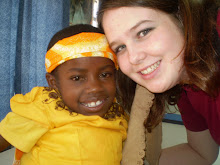Well, when things slow down in the maintenance hangar, we start pulling down more involved sheet metal projects from upstairs. One recurring project is rebuilding flaps. After countless landings on gravel strips, there seems to be more dented metal than straight, so we pull flaps off and put on rebuilt ones, leaving the beat up mess to be rebuilt on a slow day.
Several weeks ago, I was looking for something to do, and the hangar was looking pretty clean, so Dom invited me to pull down a flap to start on that project. I've done a bit of sheet metal in my limited A&P experience, but nothing this involved or structural. Or if it was something this involved/structural, I was usually just asked to pull the trigger on the rivet gun, while someone else was doing the majority of the work.
Here's a description of the process, what I am learning, and how I have messed up so far. Someday, I will get a camera and have accompanying pictures to make it more interesting.
1. remove old skins. Flaps are generally put together with a bunch of cherry rivets, so you can either power through the removal process, or take time to practice removing cherries without damaging the surrounding skin. I tried a couple different methods, and found that I definitely favor the die grinder with a cut off wheel, rather than a carbide bit (I saw someone use this method, and thought I would give it a try). I found the carbide was much harder to control, as well as slower. The cut off wheel worked quickly, and is easy to avoid the skin if you are careful. After grinding down the head, I punched the core out with a small punch before drilling off the aluminum.
I also left the stringers on at this point, so I could figure out later which one went where.
2. clean. After as much abuse as these flaps get, they are usually full of grime and grease, amongst other things. I donned gloves, safety glasses, and a rubber boots as I pulled out the etch and scotchbrite to break down the build up. Some of the small places are tough to get into, but its worth it to get it good and clean. You could miss some corrosion if you don't spend time to clean it up properly.
3. inspect. Depending on how bad the corrosion is, sometimes patches are necessary, sometimes entire ribs need replaced. Usually a little bit of a bent down rib can be straightened rather than replaced. Determining the safest, most cost effective method is the challenge here. For me, I just had to straighten a few bent ribs. The corrosion wasn't bad at all.
4. Remove corrosion. Thus far, I have mostly used a scotchbrite wheel on a die grinder to remove pitting. Some areas were very difficult to get to, so I had to sand at those for a while. The worst spot of corrosion wasn't completely through a rib, but all that remained was a thin film of aluminum, so I broke it off and built a patch.
5. Order parts. Determine the number of cherries you will need to rebuild the piece, taking into consideration length as well as whether they will need to be oversized. When you come up with a magic number of how many you think you need for one flap, multiply it by two (cause the other flap is next) then use the 150% rule. I had to order about 450 rivets, because we had a bunch in stock already. Also make sure you have enough sheet metal (check thickness according to the maintenance manual) for the project, as skin pieces are usually pretty long. I didn't need to replace any ribs, but if I had to, I would want to order them as soon as possible.
6. strip paint. Odds are, you don't have to replace ALL the skins. I had half the flap still good, so I left that skin on, removed the paint, and was ready for the next step. Also beware of what stripper you are using, and its effect on steel. The attachment pieces are steel, and corrode quickly with common strippers. Be sure to tape over them with aluminum tape, and check them quickly after you are done stripping to make sure they don't turn orange in an hour. I had to clean them up with more sandpaper, and spray them right away with zinc phosphate to keep them from getting any worse.
7. fabricate skins. WHAT A PAIN!! This was the worst part for me. First off, the leading edges are not an easy piece to make, especially if you have to do a piece that is too wide for your roller. I clamped a steel pipe to a table, and bent the metal around that to get about the same shape as my leading edge. Secondly, the trailing edge has a very sharp radius with a tight bend. The piece of metal is too big for our bending brake, so we have this jury-rigged plywood and screws bender that doesn't impress me. I asked someone for help who had recently build his own set of flaps (that replaced the set I am working on) and he jumped around on it for a bit, and handed me a cracked piece of metal. I finally got one to sort of work, but am planning on visiting another hangar with a wider brake when it comes time to fabricate the skin for the next flap. The most important part of fabricating skins for this project is to leave plenty of room. Don't trim your pieces to size until you are ready to rivet everything together.
to be continued...
Dec 2
6 years ago
